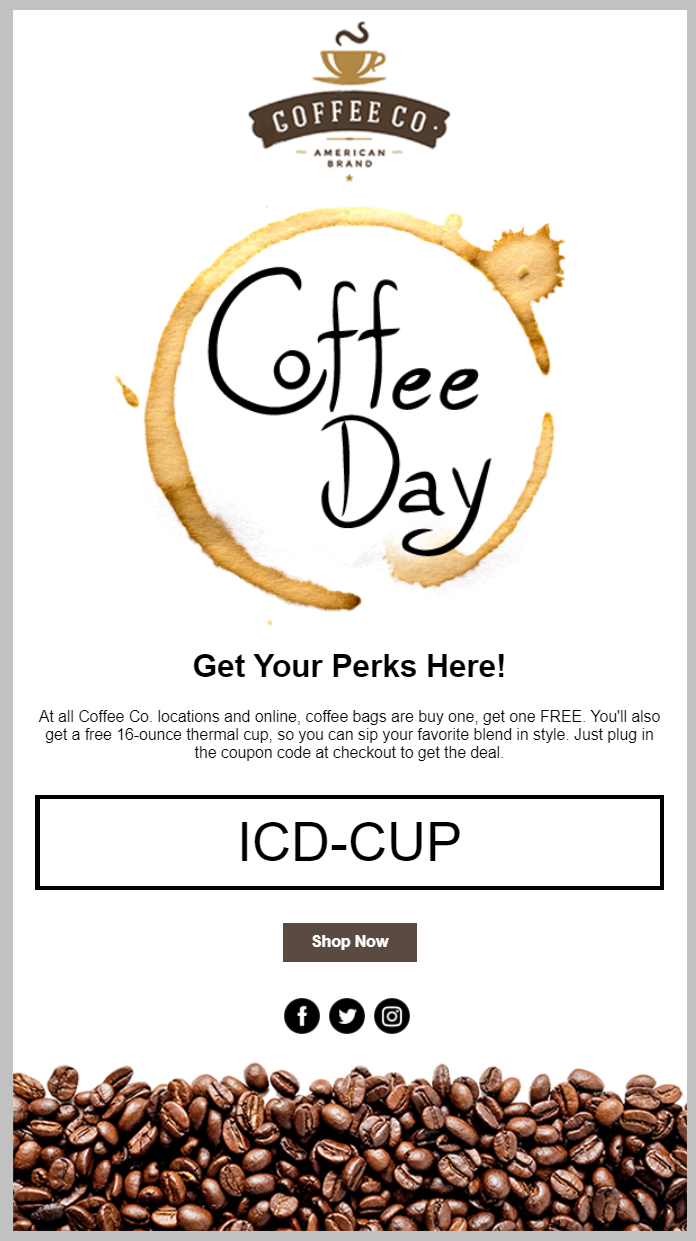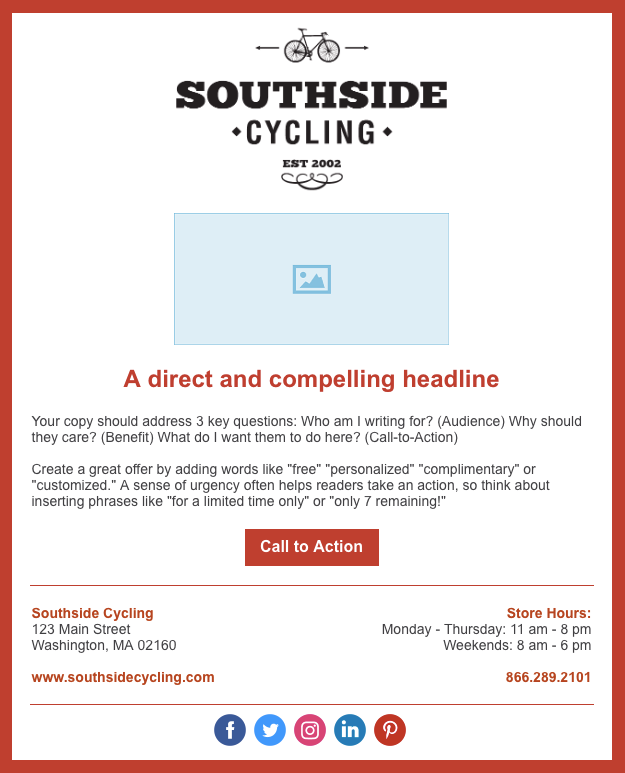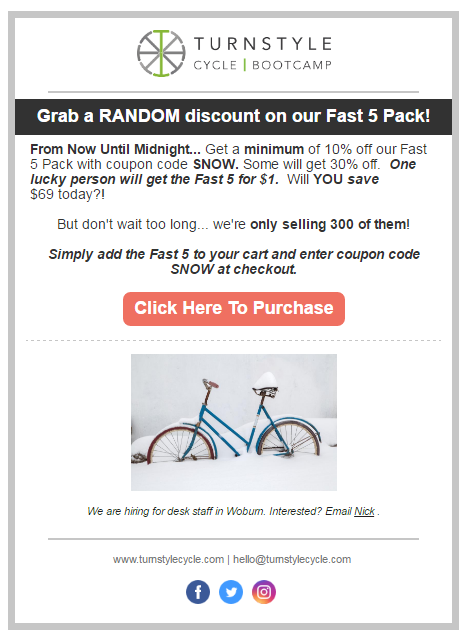
When you send a marketing email, it’s a bit different from a regular email.
You’re not just sharing information, you’re trying to drive engagement that supports your business in some way.
You’re trying to drive action without being too pushy and turning your subscribers off.
What’s the secret to writing a good marketing email?
The best email marketing campaigns have a clear focus, authentic tone, and information that’s helpful to the reader.
Use these tips to write marketing emails that drive business:
Infuse the personality of your business.
Imagine you’re having a face-to-face conversation with a customer. What would that experience be like? Your reader should feel like you’re speaking directly to them as well. Extend the great experience you regularly provide to create an engaging content strategy.

Make sure the subject line is true to the content of your email.
There are many tips on how to write good email subject lines. The most important tip? Be clear about what the reader should expect when they open the email.
Take advantage of the preheader text to entice the reader to open your email.
The preheader text is like a second subject line. It gives you an additional chance to entice the reader to open your email. Use this to your advantage, especially when it comes to increasing your mobile open rates.
Keep content clear and concise.
Picture, Paragraph, Call to Action. The best emails have a clear focus and are designed to encourage a single action from the reader. Clear, concise content also makes it easier to read your emails.

Only include information that helps the reader take the action you want them to take.
Remove anything that veers from the action you want the reader to take. Doing so helps you get to the best length for your email newsletter. If it’s not helping your reader take the desired action, it’s a distraction. Remove it.
Plan on sending more than one email.
It would be great if all you needed was one email to do the job. The truth is people are busy and your business isn’t their top priority. It’s not that people don’t want to take action, it’s just that they get distracted. Plan your email marketing calendar to include a short series of three emails around a particular promotion: an announcement, a reminder, and a last chance.
Ready to write your marketing email?
Now you know the basics of how to write a marketing email. Put these tips to use and start seeing more meaningful results from your email marketing today.
These content tips, combined with a customizable email template, make it easy to create a persuasive email in minutes — like the example below.





